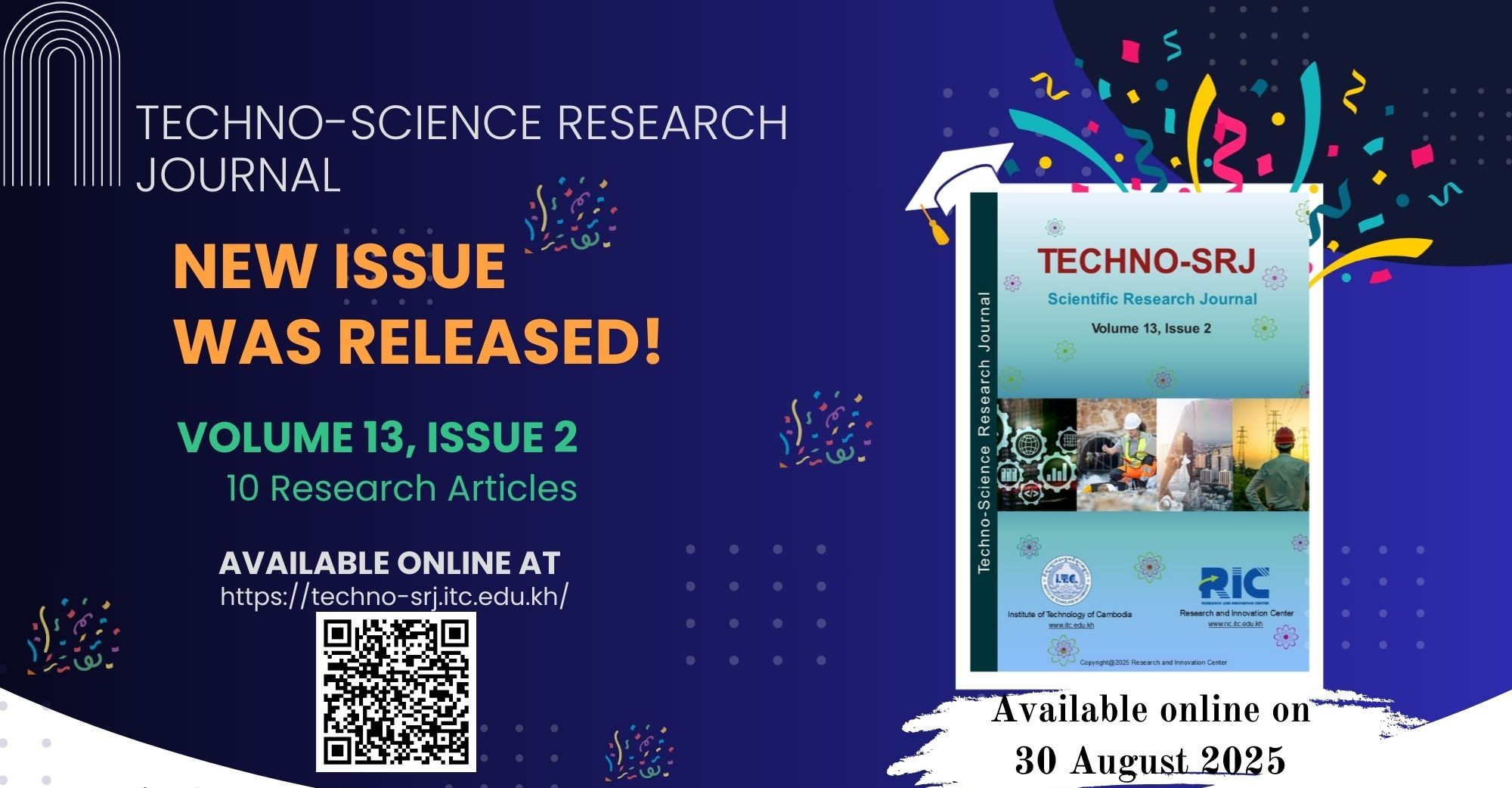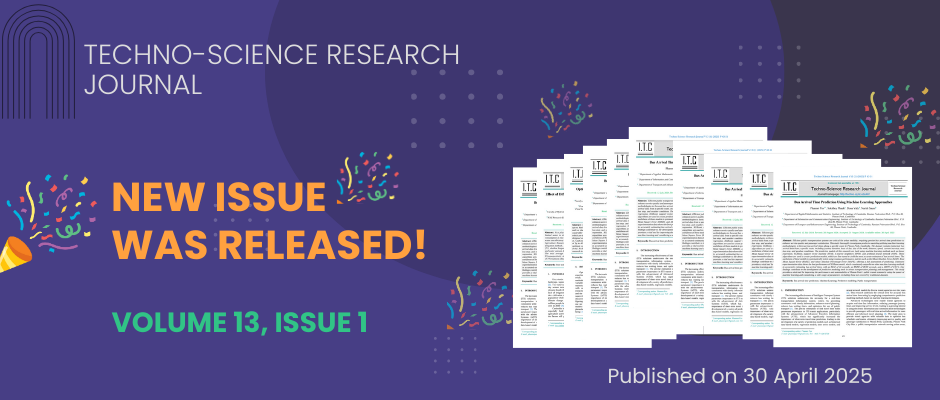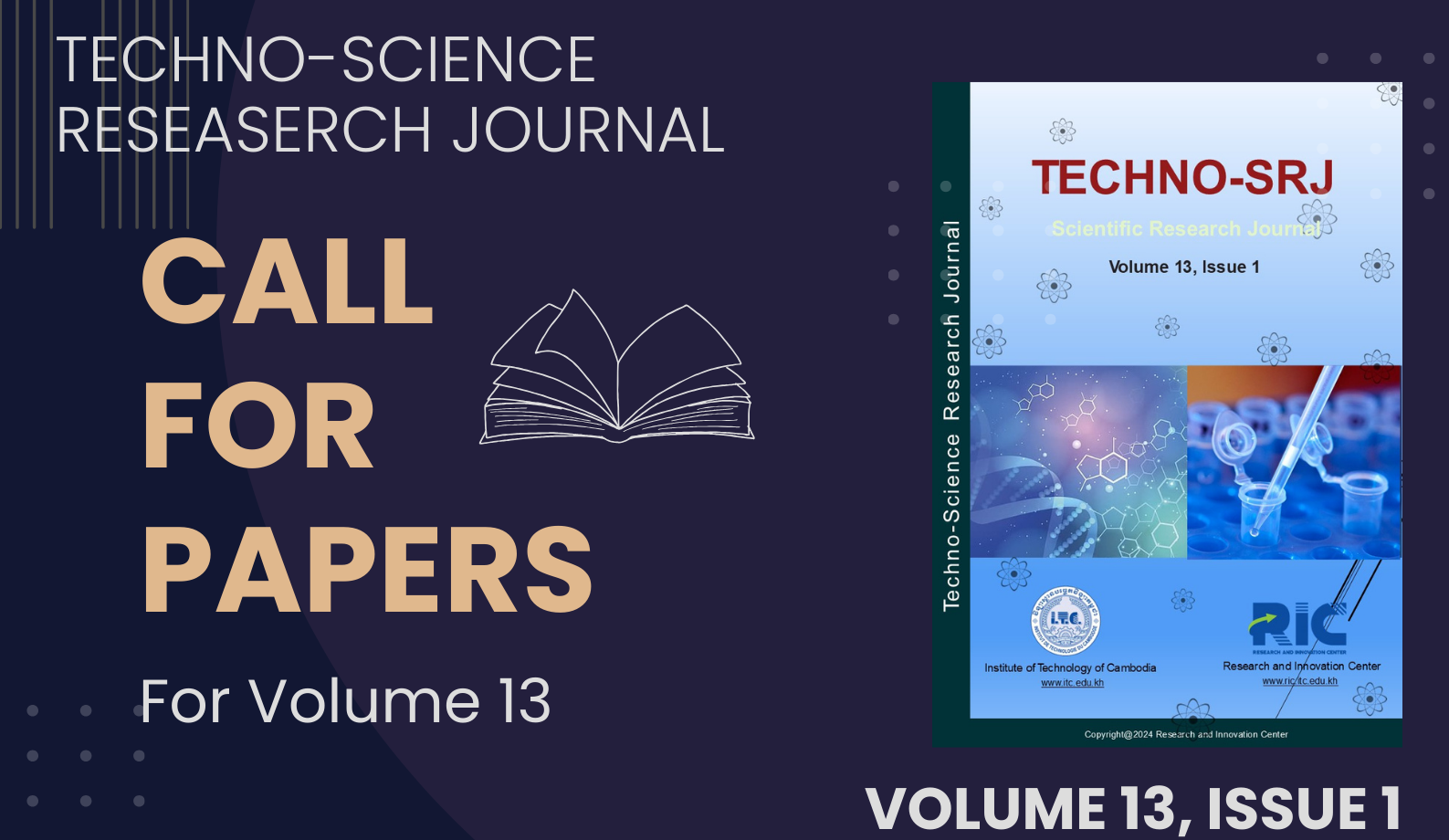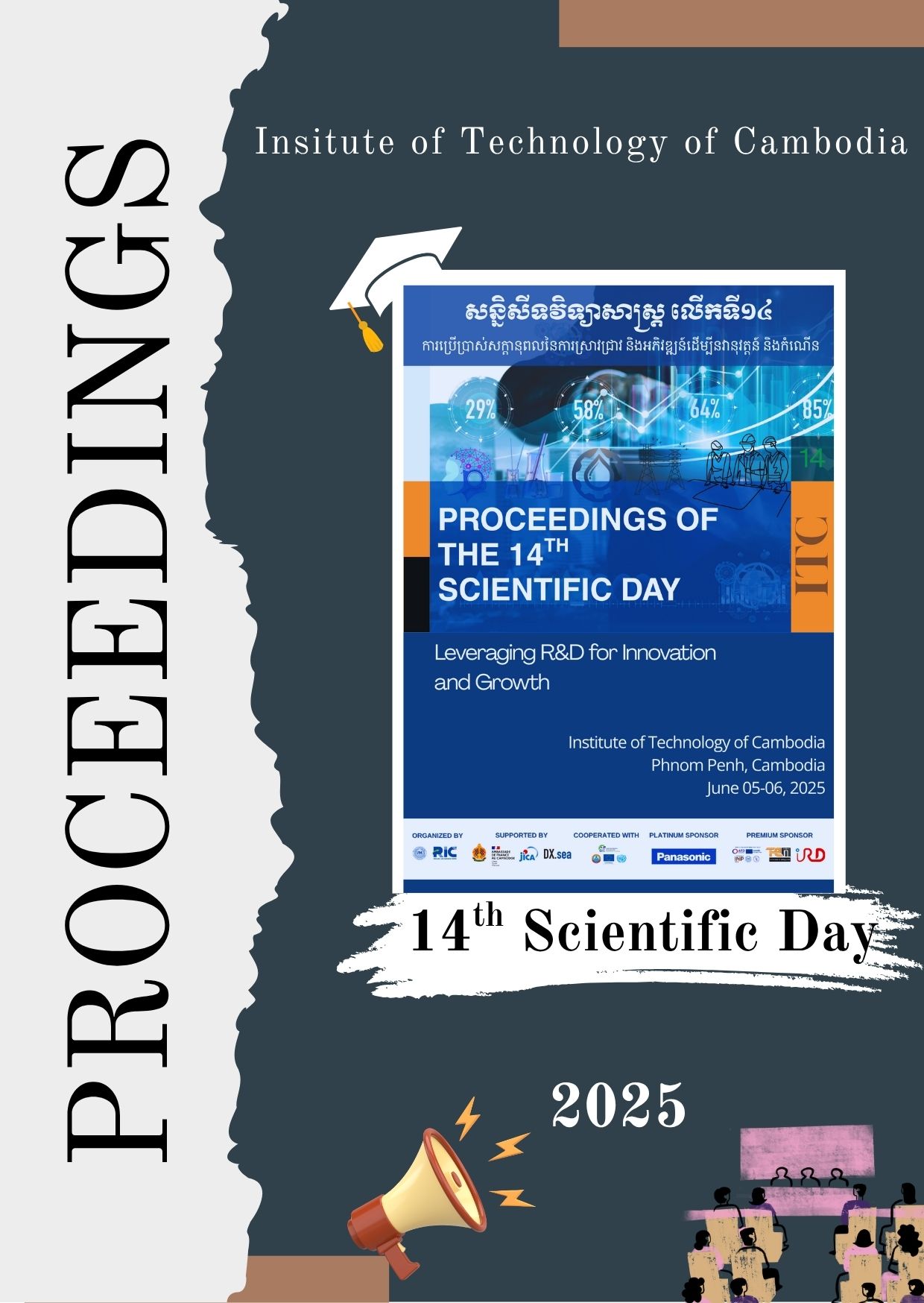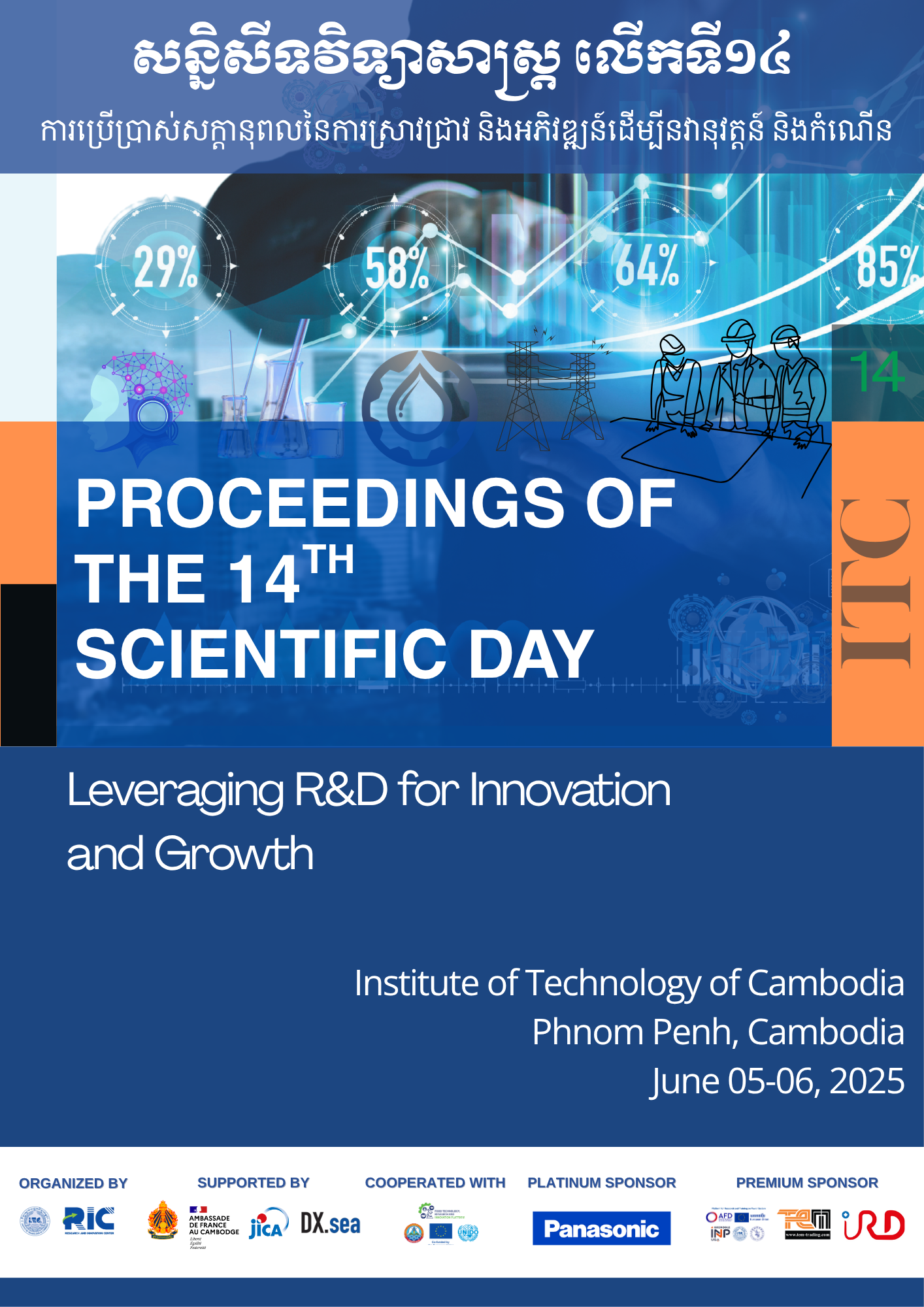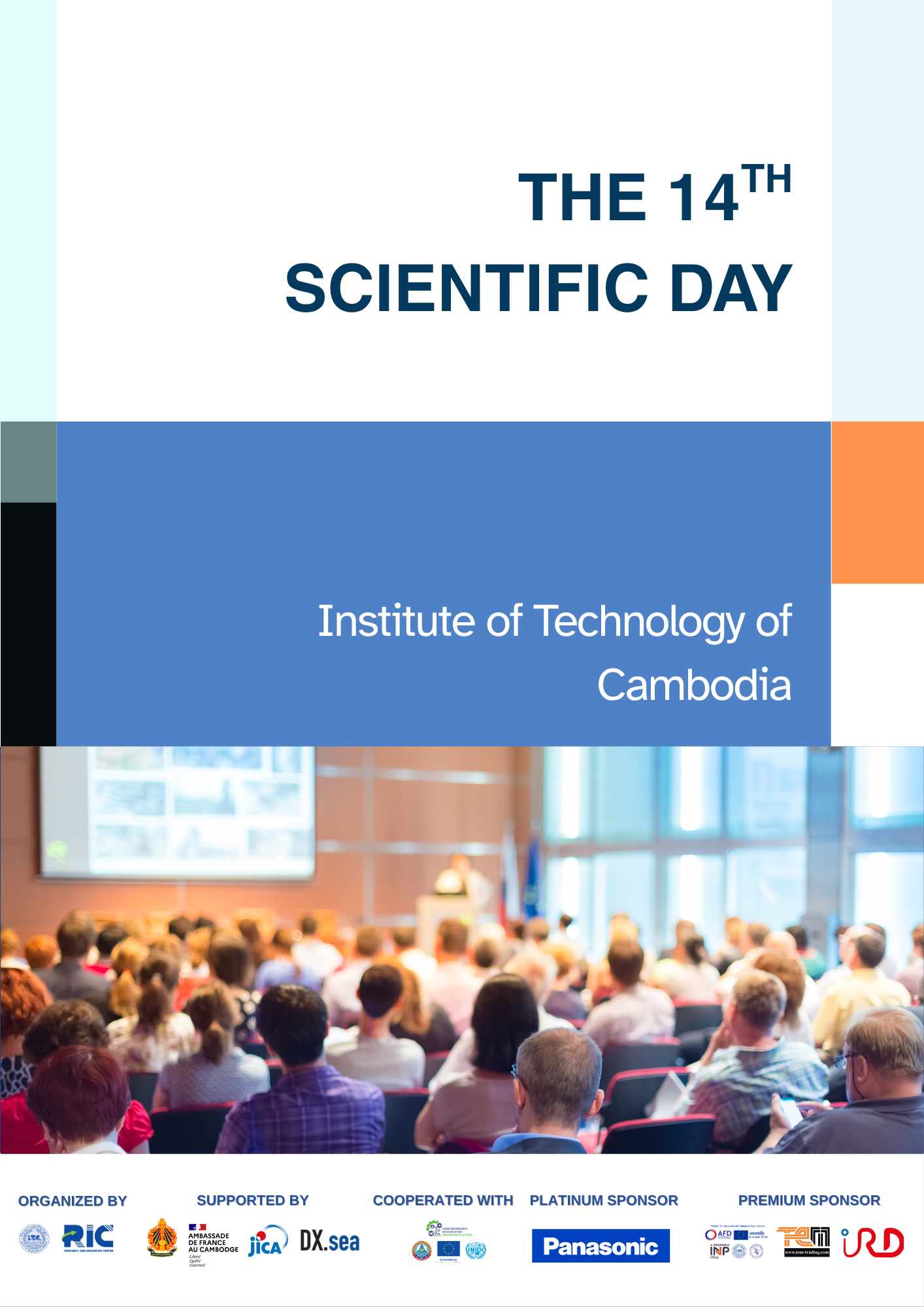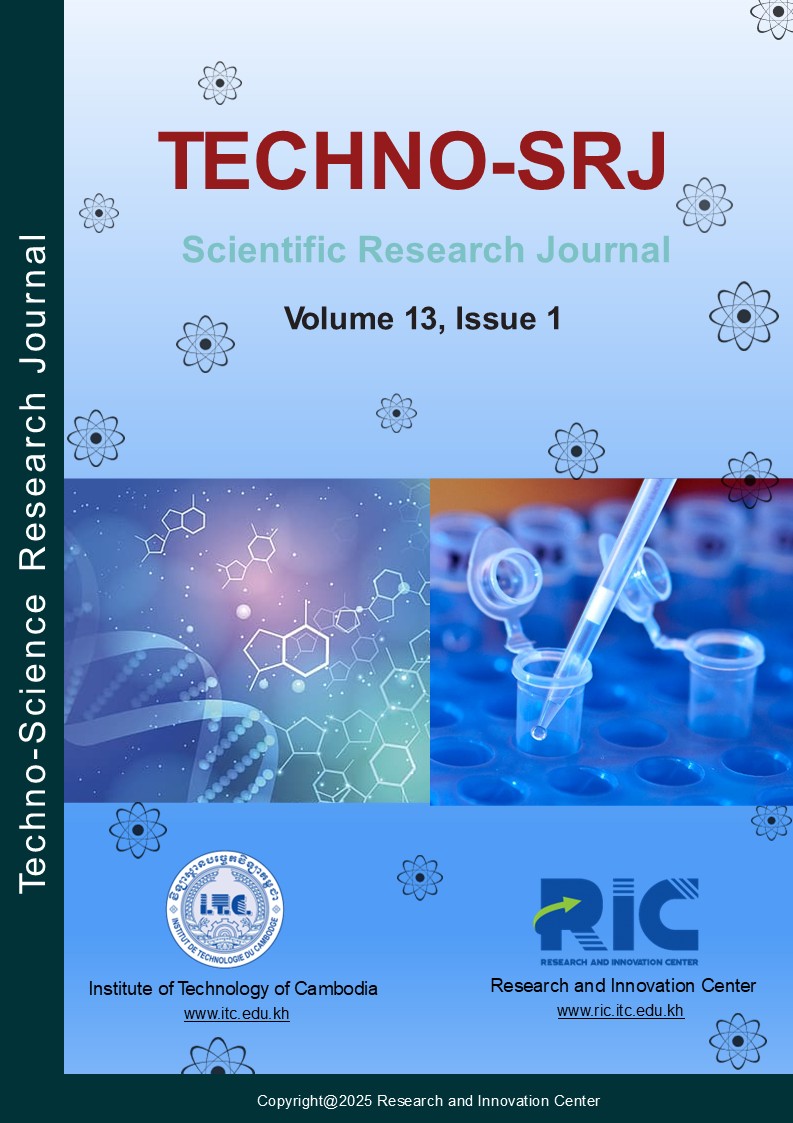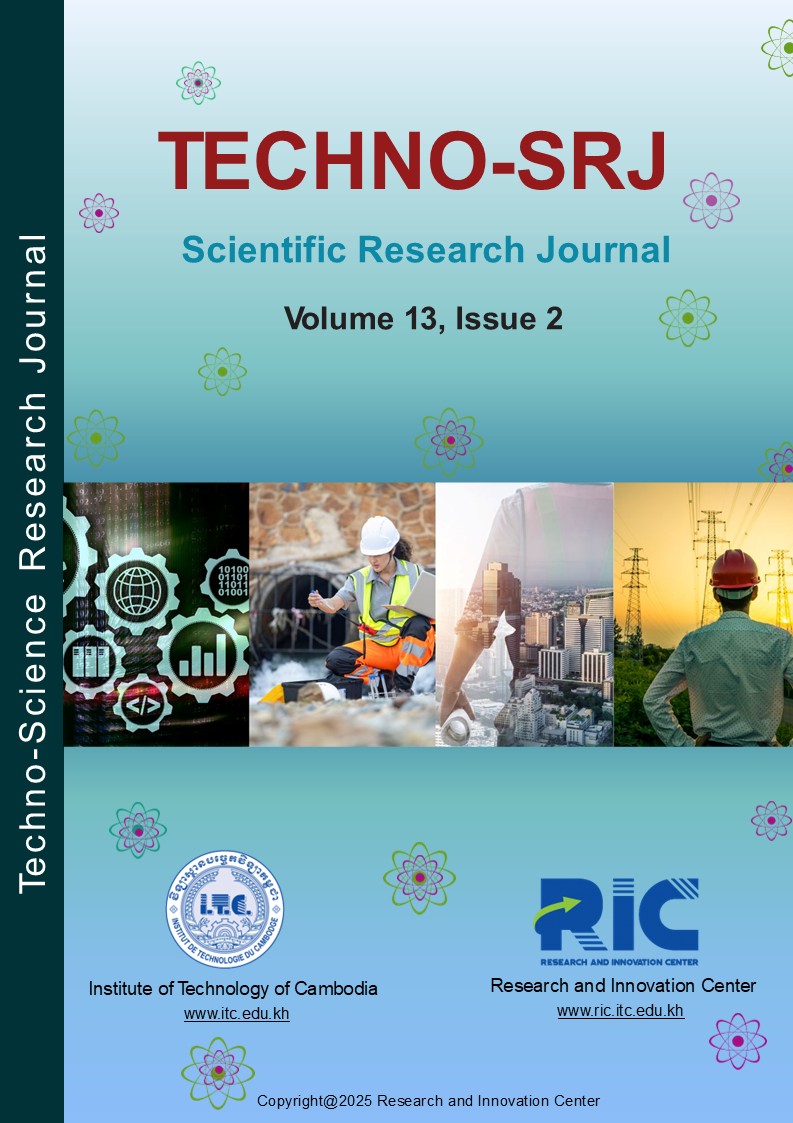The expansion of agricultural land, especially for commercial crops, and deforestation caused by ever-increasing domestic and social-economic development have influenced the streamflow and altered water resources in the Sen River, one of the largest tributaries of the Tonle Sap Lake in Cambodia. The objective of this study was to examine the streamflow under land use change by using Supervised Land Use Maps generated from satellite images. Landsa
The Royal Government of Cambodia has set a target of providing clean water to the residents of the whole country in 2025, in which up to 90% of households are covered by piped water supply. To date, nearly 400 water supplier providers (formal and informal) are presented and reported that existing infrastructure reveals poorly designed systems and construction mistakes. The standard design for water supply and modern technology was proposed to imp
The Koh Norea cable-stayed bridge, which connects the islands of Koh Pich and Koh Norea, is considered as one of Cambodia's most significant projects. The main bridge is an extrados cable-stayed bridge with two tall pylons. The pylon is supported by eighteen 2.0m diameter, 62.60m long drilled piles that are rock socketed into coal measure sandstone. Large diameter super-long bored piles typically have a high bearing capacity. The self-balanced me
This article presents a sensorless control system of permanent magnet synchronous motor (PMSM) for solar electric tuktuk (E-tuktuk) application. This study purposes a new method of control algorithm of PMSM for E-tuktuk with low-cost by using the sensorless strategy. The sensorless strategy covers the estimated rotor speed and position of PMSM, and a sliding mode observer (SMO) is proposed in this study. The SMO is the most popular method of sens
Hot-air drying technique helps remove water content, prevents the quality of tomatoes from microbial growth, and extends their shelf life. Nevertheless, hot-air drying could affect dried products' nutritional value and physicochemical quality. Therefore, this study investigated the drying kinetics and the changes of physicochemical and bioactive compounds of local tomatoes (Cherry and Holland) during processing into dried tomatoes. To process the
In urban areas, there is concern that storm water runoff and flooding may be intensified because of the effect of climate change on precipitation amounts, intensities, and frequencies. The objective of this study is to use the Storm Water Management Model (SWMM) to assess the existing drainage’s capacity, to quantify the impact of climate change on existing drainage system and to propose a structural measure for reducing the flood impact. The SWM
Accelerated soil erosion caused by water is one of the most widespread problems affecting environmental quality, agricultural productivity, and food security in many countries. These issues tend to cause more severe impacts on developing countries, especially in the tropical highland areas. Therefore, this study was conducted in the Prek Thnot Basin, a sub-catchment of the Mekong Basin in Cambodia, to (1) simulate sediment yield at the outlet by
Herbs and spices are known to have high biological activities such as antimicrobial, antioxidant, and so on. However, it depends on the types of bioactive compounds present in the extracts. The quality of the extracts is strongly dependent on the extraction method and extraction conditions. In this study, we focused on the investigation of the effect of extraction time and solvent types on the extraction yield of bioactive compounds such as total
Natural rubber (NR) is often compounded with inorganic fillers such as clay to broaden its applications, reduce the production cost, and also to impart good mechanical properties. In this study, the effect of local clay on physical and mechanical properties of Cambodian clay-filled natural rubber latex foams was investigated. The natural rubber latex foam was produced via the Dunlop method through the conventional vulcanization system with sulfur
The aim of this study is to investigate the organic petrology of shale in Phnom Mreach, Angkor Chum District, Siem Reap province, onshore Cambodia. Thin-section is carried out to analyze mineral compositions, sedimentary texture, and shale classification. Polish-section is used to identify the types of organic matter under reflected light. Scanning electron microscope (SEM) is analyzed for further detailed study on types and morphology of organic



